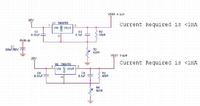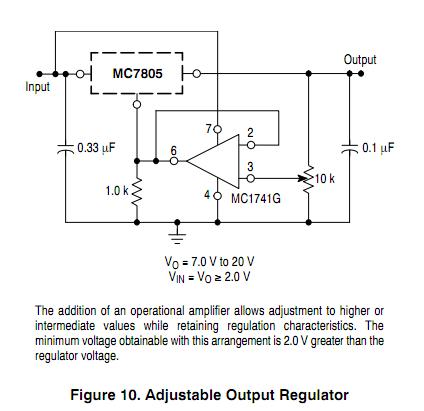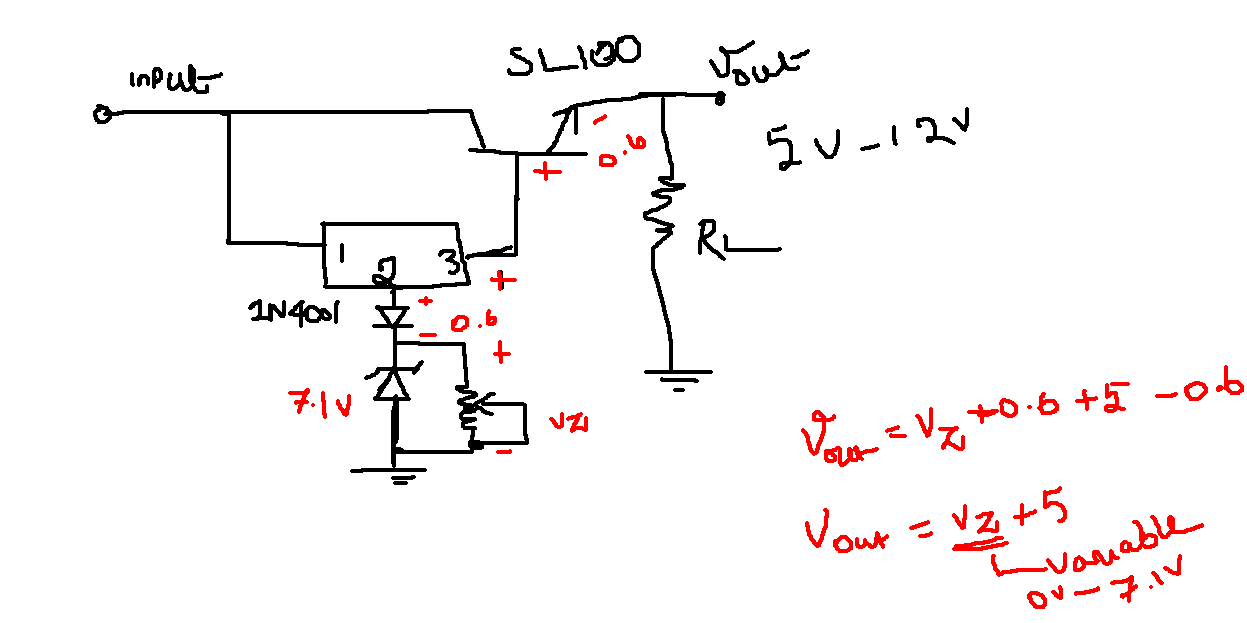themaccabee
Full Member level 4
Hi,
Im planning to use a 7805 to get a variable voltage regulator for the gate supply for an amplifier.
Digikey Part Number:MC7805BDTRKOSCT-ND
The input voltage is 28VDC
The output should be adjustable 5-12VDC, current <<1mA
So im hoping that the power dissipation (28-5)*1mA will be tolerable.
Im attaching a circuit i ve created for the same..

Ive some doubts here
1) the capacitors C2,C3,C5,C6 shall i connect it to the circuit ground or to IC 2nd Pin GND.?
2) Ive got a data sheet mentioning an opamp buffer in between the pot & the GND pin.What is its functionality & is it required.

3) How the regulation (particularly line regulation ) will be affected in this configuration?Can we do something to improve it.
Regards
Steve
Im planning to use a 7805 to get a variable voltage regulator for the gate supply for an amplifier.
Digikey Part Number:MC7805BDTRKOSCT-ND
The input voltage is 28VDC
The output should be adjustable 5-12VDC, current <<1mA
So im hoping that the power dissipation (28-5)*1mA will be tolerable.
Im attaching a circuit i ve created for the same..

Ive some doubts here
1) the capacitors C2,C3,C5,C6 shall i connect it to the circuit ground or to IC 2nd Pin GND.?
2) Ive got a data sheet mentioning an opamp buffer in between the pot & the GND pin.What is its functionality & is it required.

3) How the regulation (particularly line regulation ) will be affected in this configuration?Can we do something to improve it.
Regards
Steve

